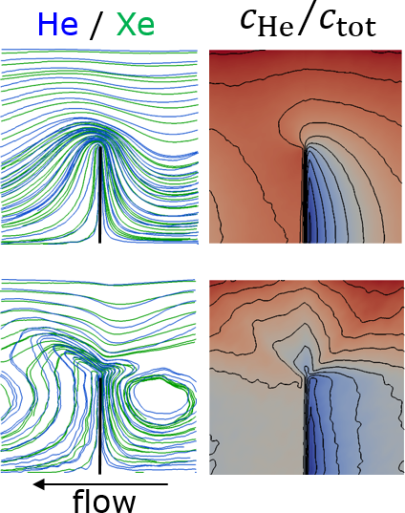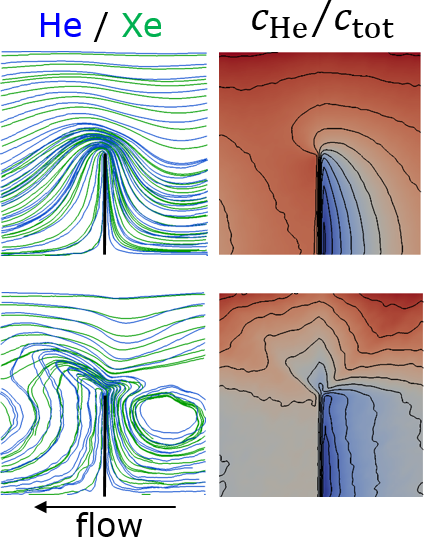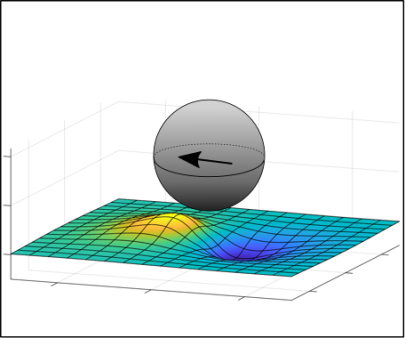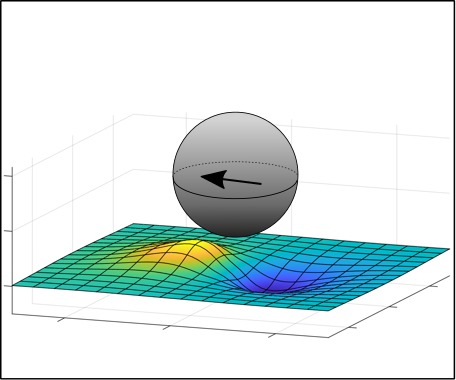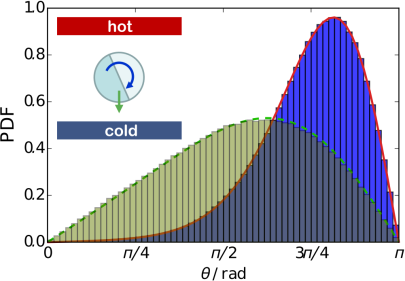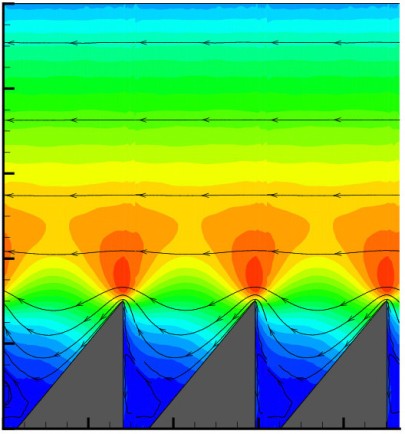Gas separation in a Knudsen pump
Knudsen pumps rely on gas-flows induced by temperature differences. We have studied the transport of gas mixtures along a Knudsen pump and observed differences in flow of the individual components of the mixture. Therefore, such a pump may be used for gas separation. This kind of separation of gas species by mass or size plays an important role for many applications in chemical engineering.
Nanoparticle-wall interactions in gases
A sphere moving in the vicinity of a wall experiences an increased fluid-dynamic drag force compared to motion far from solid boundaries, influencing the adsorption of particles at surfaces. For a small particle inside a gas, the fluid dynamics of such problems becomes very involved, since the Navier-Stokes equation is no longer applicable. We have computed the corresponding drag force on a particle and find that it is much lower than the one predicted by the Navier-Stokes equation.
Thermophoresis of Janus particles at large Knudsen numbers
Thermophoresis, the motion of a particle along a thermal gradient, is exploited for deposition of aerosols on cooled surfaces. For non-symmetric particles it may be desirable to induce deposition with a preferred orientation of the particle. As a model system for this situation, we consider a spherical Janus particle having dissimilar reflective properties for gas molecules on its opposite hemispheres and investigate the interplay between rotational diffusion and thermophoretic motion on the orientation of the particle.
Knudsen pump inducing gas flow normal to temperature gradient
Knudsen pumps transport gas by exploiting temperature variations imposed by the channel boundaries, offering the advantage of not containing any moving parts. We analyzed a Knudsen pump with a temperature field generated by an applied temperature difference between the channel walls, where the ratchet-shaped wall is equipped with varying reflection properties on different sections. The figure shows streamlines and velocity magnitudes within a channel bounded by triangular teeth which are half-specularly and half-diffusely reflecting. The use of specularly reflecting patches massively increases the mass flux compared to diffusely reflecting walls.
Reference: V. Shahabi, T. Baier, E. Roohi and S. Hardt, Thermally induced gas flows in ratchet channels with diffuse and specular boundaries, Scientific Reports 7, 41412 (2017); doi:10.1038/srep41412; www.nature.com/articles/srep41412


